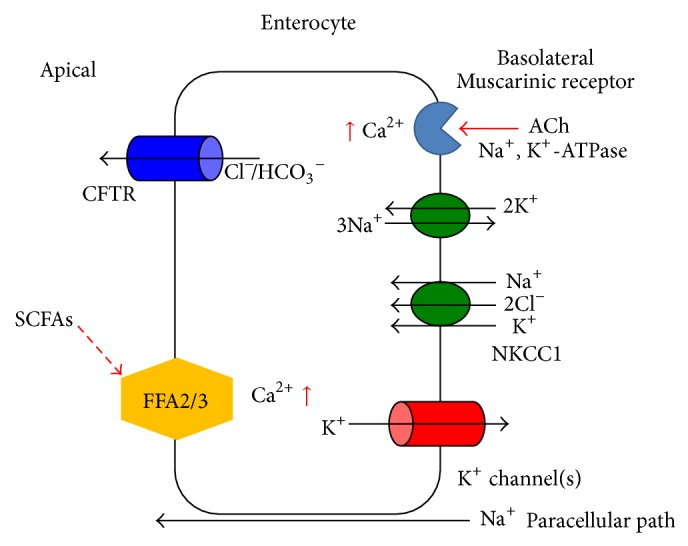Figure 1.

Schematic diagram of Cl− secretion stimulated by short-chain fatty acids in colonic epithelial cells. At the basolateral membrane, Cl− enters the cell from the basolateral space across the Na+, K+-2Cl− cotransporter (NKCC1). Na+, K+-ATPase causes drainage of Na+, and K+ leaves via the K+ channel. Na+ also moves to the apical side paracellularly. The cystic fibrosis transmembrane conductance regulator (CFTR), which is located on the apical membrane, allows Cl− to exit the cell. The colonic epithelium CFTR Cl− conductance is constitutively active [1]. Luminal SCFAs stimulate the FFA2/3 receptors located on the apical membrane, which in turn activate second messenger pathways to induce ACh release from epithelial cells basolaterally. The released ACh activates muscarinic receptors located on the basolateral membrane of epithelial cells, inducing Cl− secretion.
